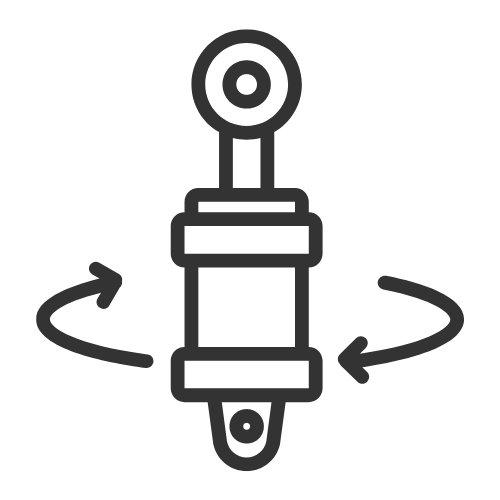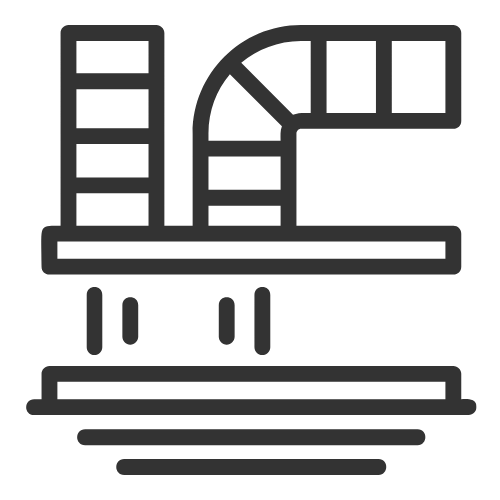Fire Dampers
Critical Components in Fire Safety and Compliance
DROP TESTS | SURVEYS | REMEDIAL WORKS | COMPLIANCE | INSTALLATION
Introduction to Fire Dampers
Fire Dampers are essential components of a building’s passive fire protection system, designed to prevent the spread of fire through heating, ventilation, and air conditioning (HVAC) ducts. When a fire occurs, these dampers automatically close to block flames and smoke from moving through the ventilation system, protecting the building and giving occupants more time to evacuate. Ensuring your building’s fire dampers are properly installed and maintained is critical to meeting UK fire safety regulations.
Want to learn more about how fire dampers work and why they’re important? Below, we answer common questions about fire dampers, their role in fire safety, and how Meritas Fire Protection can help ensure your building remains compliant with fire safety standards.
What are Fire Dampers?
Fire dampers are devices installed in ductwork where ducts pass through walls, floors, or ceilings that are part of a building’s fire compartmentation system. These dampers are designed to automatically close when a rise in temperature is detected, typically triggered by a fusible link or thermal sensor. The closure of the damper prevents the spread of fire and smoke through the ducting, protecting other areas of the building from fire damage.
In the UK, fire dampers are governed by British Standard BS 9999 and are a requirement in any building that uses HVAC systems, especially in commercial, residential, and industrial settings.
Key Elements of Fire Dampers

Fusible
Links
Fusible links are metal components designed to melt at approximately 72 degrees Celsius, causing the damper to close automatically when the temperature rises due to a fire.

Actuators
In modern fire dampers, electrical actuators may be used instead of fusible links. These actuators are triggered by the building’s fire alarm or a heat sensor, closing the damper electronically.

Ductwork
Integration
Fire dampers are installed within the ductwork where it crosses through fire-resistant walls or floors, ensuring that fire cannot travel through the ventilation system.

Inspections and Testing Annually
Fire dampers must be regularly inspected and tested to ensure they function properly in the event of a fire. Under UK regulations, they must be tested and maintained in accordance with BS 9999 and BS 5588.
Why are Fire Dampers Important for Building Safety?
Fire dampers are crucial in ensuring that fires do not spread through a building’s ventilation system. Without proper fire dampers, flames and smoke can easily travel between compartments, potentially endangering the lives of occupants and increasing property damage. Here are the main benefits of fire dampers:
- Protect Lives: By containing fire and smoke in one area, fire dampers allow occupants more time to escape safely.
- Prevents the Spread of Fire: Fire dampers prevent fire from moving through the ductwork into other areas of the building.
- Compliance with Regulations: Fire dampers are legally required in many buildings, and regular inspections ensure compliance with UK fire safety laws.
Fire dampers play a critical role in the overall fire compartmentation system of a building, and ensuring they are properly installed and maintained is a legal requirement.
The Process of Fire Damper Installation and Maintenance
Proper installation of fire dampers involves placing them at key points where ventilation ducts cross through fire-resisting walls or floors. It is important that the dampers meet the fire rating of the compartment walls to ensure full protection.
Meritas Fire Protection provides full fire damper installation services in accordance with BS 9999. Additionally, we offer annual fire damper inspections and testing services to ensure ongoing compliance and functionality. Regular testing includes:
How to Ensure Your Building is Fire Compliant
- Visual inspection of the fire damper and fusible links
- Operational testing to ensure the damper closes correctly
- Cleaning and maintenance to remove debris that may obstruct damper movement
Fire Dampers vs Other Fire Protection Systems
While fire compartmentation aims to contain fires within specific sections of a building, fire dampers focus on controlling the spread of fire and smoke through the HVAC system. Both systems work together to create a comprehensive fire safety strategy. Here’s how fire dampers compare:
- Fire Doors: These control fire within the room or compartment and protect escape routes, while fire dampers protect air ducts.
- Smoke Dampers: While fire dampers are designed to block fire, smoke dampers are designed to prevent smoke from traveling through ducts.
Having both fire and smoke dampers integrated into your building’s HVAC system is essential for complete fire protection.
Fire Dampers vs Other Fire Protection Systems
How to Ensure Your Building’s Fire Dampers are Compliant
To ensure your building’s fire dampers are compliant with UK fire safety regulations, follow these steps:
- Install Fire Dampers in All Required Locations: Fire dampers must be installed where ducts pass through fire compartment boundaries, including walls and floors.
- Schedule Regular Inspections: Fire dampers should be inspected at least once a year to ensure proper functionality.
- Perform Operational Testing: Make sure that fire dampers are regularly tested to verify that they will close effectively in the event of a fire.
- Keep Records: Document all inspections, tests, and maintenance activities as part of your building’s fire safety compliance record.
For expert fire damper installations and inspections, contact Meritas Fire Protection today to ensure that your building is fully protected and compliant.
Frequently Asked Questions
Fire dampers use fusible links or actuators that are triggered by heat. When the temperature reaches a set level, the damper closes, blocking flames and smoke from moving through the ducts.
There are two main types of fire dampers: mechanical dampers, which close when a fusible link melts, and electrical dampers, which close via an actuator triggered by the fire alarm system.
Yes, fire dampers are a legal requirement in most commercial and residential buildings under UK fire safety regulations. They must be installed where ducts pass through fire compartments, as per BS 9999.
A fire compartmentation survey assesses the fire-resistant barriers in a building to ensure compliance with safety standards.

